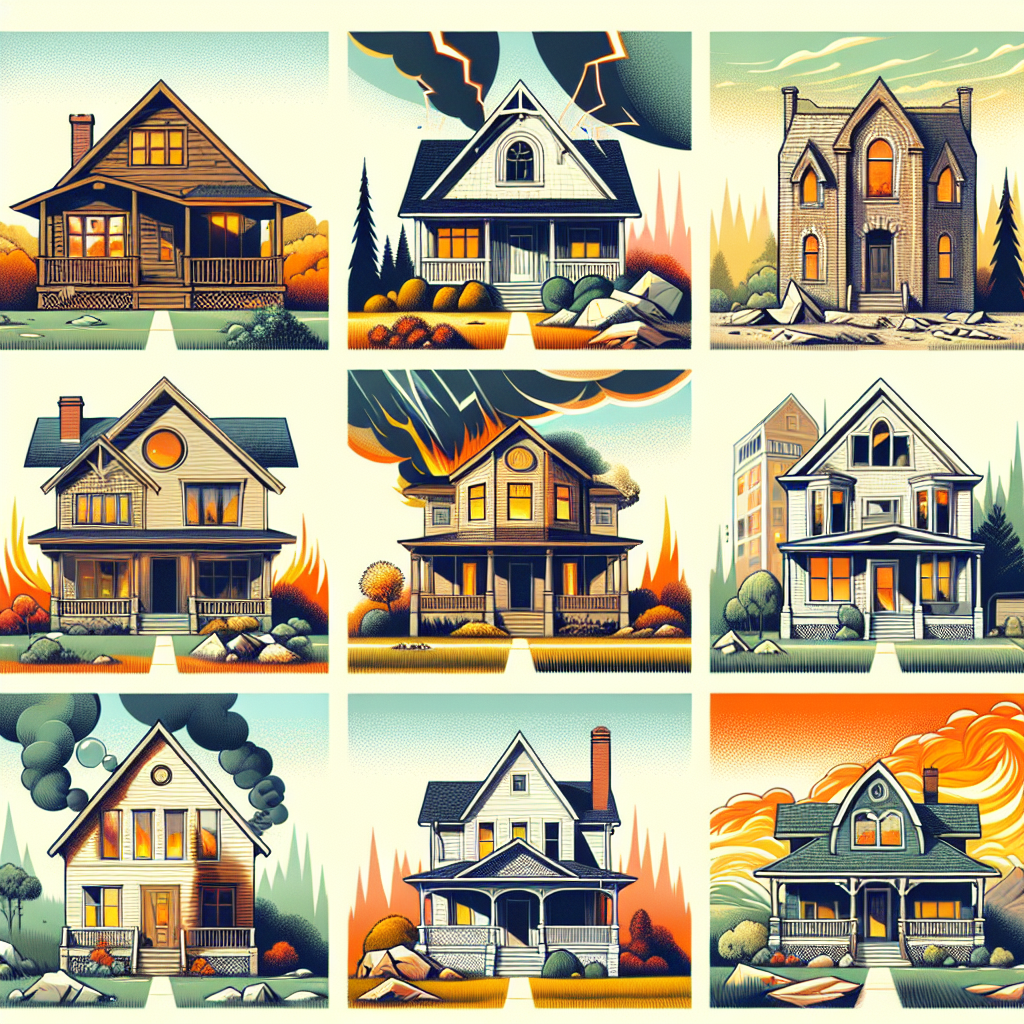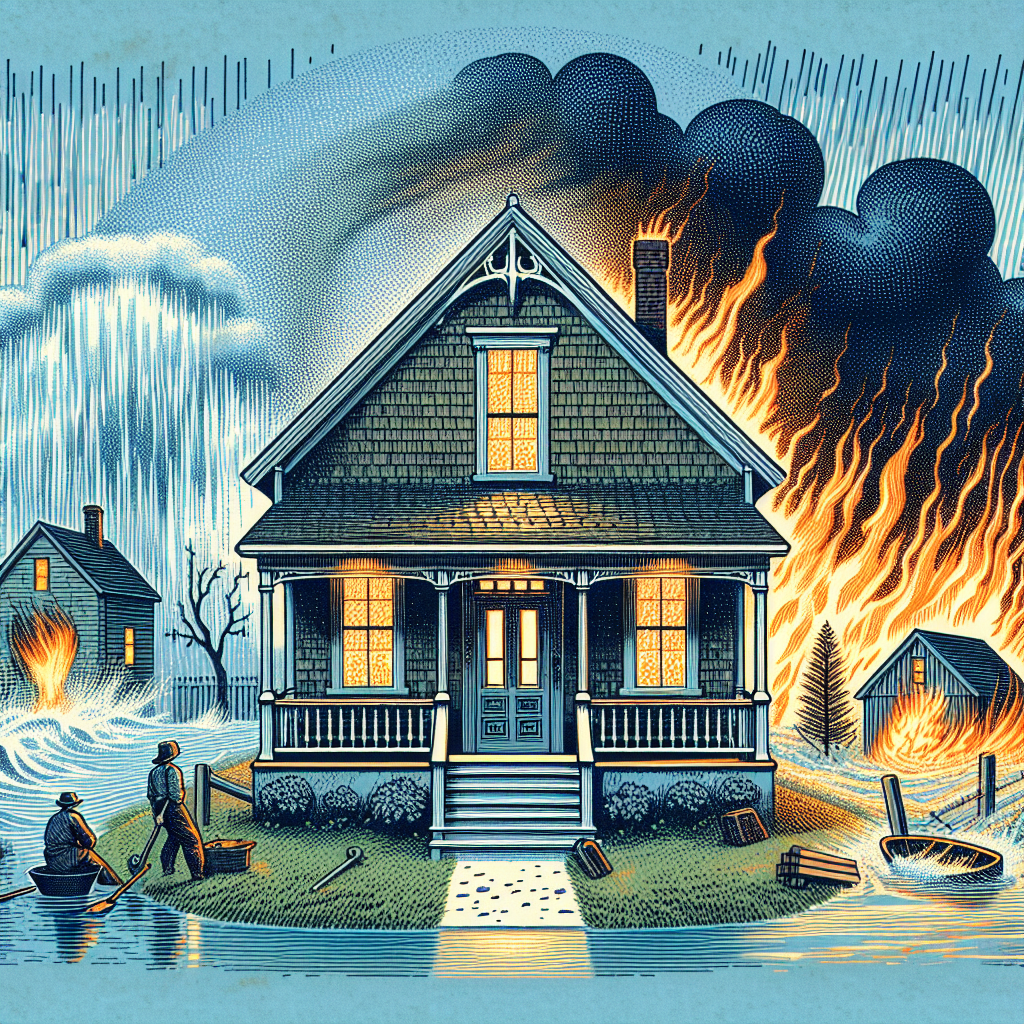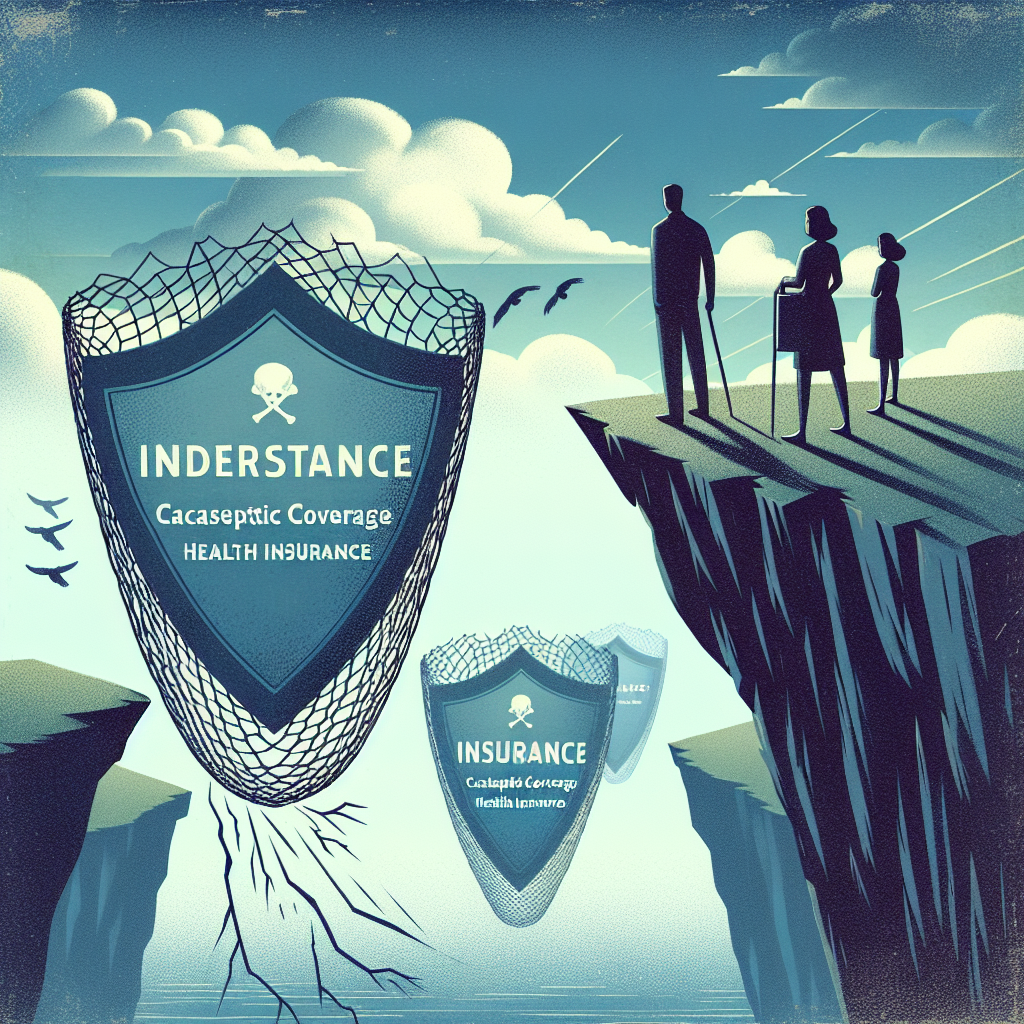Filed under Home Insurance on
Six Home Insurance Policy Forms and Their Coverages

Why Home Insurance Policy Forms Matter More Than You Think
Home insurance isn’t one-size-fits-all. The policy form you select shapes how your house, belongings, and liability are protected—and what kinds of losses will be denied. The industry relies on standardized policy templates developed over decades, most commonly the ISO HO series. For most homeowners and renters, the practical question is simple: which of the six most common forms fits your living situation and risk profile? Choosing wisely can save you money today and spare you from unpleasant surprises after a loss.
This guide demystifies the six home insurance policy forms and their coverages. You’ll learn what each form protects, where the gaps are, how insurers price risk in today’s market, and the upgrades that deliver meaningful value. Whether you own a suburban single-family home, a downtown condo, or rent a studio, you’ll find a clear path to a policy that makes sense for your life.
How Home Insurance Policy Forms Work
Policy “forms” are structured contracts that define your protection, exclusions, and claims rules. Most include several core coverages: Dwelling (the home itself), Other Structures (e.g., a detached garage), Personal Property (your stuff), Loss of Use (extra living expenses when a covered loss makes your home uninhabitable), Personal Liability (lawsuits for bodily injury or property damage to others), and Medical Payments to Others. Each form handles perils differently, which is the heart of your protection:
Named-peril coverage lists exactly which risks are covered—if a peril isn’t named, it’s excluded. Open-peril (also called “special” or “all-risk,” though exclusions still apply) covers everything except what’s specifically excluded. The broader the peril language and the fewer the exclusions, the stronger your safety net tends to be.
Two claim settlement methods also matter. Replacement cost covers the cost to repair or replace property with new materials of like kind and quality, without deducting for depreciation. Actual cash value (ACV) subtracts depreciation, which can significantly reduce a payout for older items. Many policies default to replacement cost for the home and ACV for personal property unless you add an endorsement.
The Six Core Home Insurance Forms at a Glance
Here is a high-level look at the six most common policies used by homeowners and renters in the U.S. insurance market:
HO-1 (Basic Form): An entry-level policy that uses named perils and provides very limited protection. It’s less common today because it leaves too many gaps.
HO-2 (Broad Form): A named-peril option with more covered causes of loss than HO-1. It’s budget-friendly and works for some properties, but still narrower than modern needs in many regions.
HO-3 (Special Form): The industry’s workhorse for owner-occupied homes. It offers open-peril coverage for the structure and named-peril coverage for belongings.
HO-4 (Renters Form): Designed for tenants. It protects personal property, liability, and loss of use—but not the building.
HO-5 (Comprehensive Form): The most expansive standard homeowner coverage, providing open-peril protection for both the home and personal property, along with higher default sublimits.
HO-6 (Condo Unit-Owners Form): Tailored to condo living, protecting the unit’s interior, your belongings, liability, and often including special protections like loss assessment.
HO-1: Basic Form
What it is: HO-1 is the bare-minimum template. It typically lists a limited set of perils such as fire, lightning, windstorm, hail, explosion, smoke, aircraft or vehicle damage, riot or civil commotion, vandalism, and volcanic eruption. Theft and water damage are often restricted or excluded. Because it omits many common loss scenarios, it’s rarely recommended for modern households.
Who it’s for: In practice, HO-1 is seldom offered by mainstream carriers, and when it is, it’s often tied to underwriting programs for specific markets or heavily discounted scenarios. If you’re considering it solely to reduce premium, be aware that even one uncovered loss can erase any savings.
Coverage notes: Dwelling is typically covered on an open-peril basis only in later forms, not here; HO-1 relies on named perils. Personal property often defaults to ACV unless you pay extra for replacement cost. Loss of use and liability may be included but modestly.
Bottom line: HO-1 is a last-resort policy for very narrow needs. For most homeowners, it’s more prudent to step up to HO-2 or HO-3 for realistic protection.
HO-2: Broad Form
What it is: HO-2 expands the named-peril list to include additional causes like falling objects; weight of ice, snow, or sleet; accidental discharge or overflow of water or steam from within a plumbing, heating, AC, or household appliance; sudden and accidental tearing apart, cracking, burning, or bulging of a heating system or appliance; freezing of plumbing; and sudden and accidental damage from artificially generated electrical current.
Who it’s for: Budget-conscious owners of homes in good condition, especially when you want a clear, punched-out list of what’s covered. It’s also an option for older homes that may not qualify for HO-3 because of underwriting concerns.
Coverage notes: The dwelling and personal property are both covered on a named-perils basis. Upgrades like water backup, extended replacement cost, and replacement cost for personal property typically require endorsements.
Bottom line: HO-2 is a workable middle ground when HO-3 is out of reach or you want a lower premium while still protecting against the most common non-catastrophic losses.
HO-3: Special Form
What it is: HO-3 is the standard homeowner policy for single-family homes. It provides open-peril coverage for the dwelling and other structures, which means your home is protected for all risks except those expressly excluded (flood, earthquake, neglect, and similar exclusions still apply). Personal property is usually covered for named perils unless you upgrade to an endorsement that broadens it.
Who it’s for: Most owner-occupants whose homes are in insurable condition. If you have a mortgage, your lender likely expects an HO-3 or better.
Coverage notes: Replacement cost for the dwelling is common, often with options to add extended or guaranteed replacement cost that can exceed your Coverage A limit if a widespread event drives prices up. You’ll also set limits for personal property, loss of use, and liability. Sub-limits apply to categories like jewelry, firearms, silverware, and collectibles, so scheduling valuables is a smart move.
Bottom line: HO-3 balances robust coverage with cost-effectiveness, making it the default choice for many families. It’s often the best starting point when comparing quotes.
HO-4: Renters Form
What it is: HO-4 covers your belongings, personal liability, and loss of use as a tenant. Because the landlord’s policy handles the building itself, this form zeroes in on what you bring into the unit and your exposure if someone is injured or you cause damage to others’ property.
Who it’s for: Renters in apartments, multi-family buildings, or single-family homes. It’s inexpensive relative to the protection it offers, especially for liability and additional living expenses if a covered loss displaces you.
Coverage notes: Personal property is typically named-peril by default and often ACV unless you choose replacement cost. You can add valuable items coverage, water backup, and increased liability limits. Many landlords now require proof of renters insurance before move-in because it reduces disputes and risk.
Bottom line: HO-4 is one of the highest-value policies in insurance. It’s a low-cost way to protect thousands of dollars in belongings and shield your savings from liability claims.
HO-5: Comprehensive Form
What it is: HO-5 is the gold standard for many owner-occupied homes. It typically offers open-peril coverage for both the dwelling and personal property, along with broader default coverage terms, higher sub-limits for categories like jewelry and electronics, and built-in replacement cost for contents with many carriers.
Who it’s for: Homeowners who want fewer gaps and are willing to pay a modest premium increase. It’s especially attractive for newer homes, high-value electronics, and households that don’t want to parse which perils are named for personal property.
Coverage notes: Because personal property is open-peril under HO-5, your belongings are better protected against unusual or unexpected causes of loss—subject to standard exclusions. Underwriting can be stricter, and availability may depend on location and home characteristics.
Bottom line: If the budget allows, HO-5 reduces the risk of gray-area claim denials on your belongings. It’s a straightforward way to buy peace of mind in a world of evolving risks.
HO-6: Condo Unit-Owners Form
What it is: HO-6 is engineered for condominium living. The condo association’s master policy generally covers the building structure and common areas. Your HO-6 insures your unit’s interior (often called “walls-in”), including fixtures, built-ins, and improvements, along with your personal property, loss of use, and liability.
Who it’s for: Condo owners who need to coordinate with their association’s master policy. What the master policy covers—bare walls, single-entity, or all-in—determines the right amount of interior coverage you need on your HO-6.
Coverage notes: A standout feature is loss assessment coverage, which helps pay for your share of certain covered losses assessed by the association, up to a limit. Endorsements can extend protection for water backup, unit improvements, equipment breakdown, and higher limits for valuables.
Bottom line: The HO-6 offers targeted protection where the master policy ends. Review your condo bylaws and master policy language before setting limits to avoid gaps.
What None of These Forms Automatically Cover
Every policy has exclusions. Understanding them helps you decide what to add back through endorsements or separate policies. Common exclusions across the six forms include flood from rising water, earth movement like earthquakes and landslides, maintenance issues such as wear and tear or neglect, mold and fungus beyond limited allowances, power failure off premises, government action, war and nuclear hazards, and intentional loss. Water backup from sewers or drains is usually excluded unless you add it. Ordinance or law coverage (the cost to bring older parts of a home up to code after a covered loss) is limited unless increased by endorsement.
If you live in zones prone to hurricanes, wind, hail, wildfire, or earthquake, additional deductibles or separate policies may apply. For many coastal counties, hurricane deductibles are a percentage of Coverage A rather than a flat amount. In wildfire-exposed regions, insurers may also apply separate deductibles or require mitigation steps to bind coverage.
Endorsements That Add Real-World Value
Policy forms are a starting point. The smartest coverage packages use targeted endorsements that address the way you actually live. Consider these high-impact add-ons:
Extended or guaranteed replacement cost: Boosts your dwelling limit by a set percentage or removes the cap when a covered loss outpaces your Coverage A due to inflation or demand surge.
Replacement cost for personal property: Upgrades contents from ACV to replacement cost, a meaningful improvement for electronics, furniture, and clothing.
Water backup and sump overflow: Covers a frequent and messy cause of loss otherwise excluded by most forms.
Service line coverage: Pays to repair underground utility lines on your property, such as water, sewer, and electrical service lines.
Equipment breakdown: Protects against sudden mechanical or electrical breakdown of appliances, HVAC, and smart home systems.
Scheduled personal property: Removes sub-limits and broadens coverage for jewelry, fine art, cameras, instruments, and collectibles.
Ordinance or law increase: Helps cover code upgrades during repairs after a covered loss—important for older homes and fast-changing building codes.
Home cyber and identity theft: Addresses a growing risk landscape, including coverage for cyber extortion, identity recovery, and data restoration with certain carriers.
How to Choose Among the Forms: A Simple Framework
First, match the form to your living situation. Owners of detached homes usually compare HO-3 and HO-5. Renters choose HO-4. Condo owners buy HO-6. HO-1 and HO-2 are options in specific circumstances but often not ideal for comprehensive protection.
Next, think in terms of perils and settlement. If you want fewer arguments at claims time, prioritize open-peril protection where you can and opt for replacement cost on contents. That combination decreases surprises and improves recovery after a loss.
Then tailor coverage to your risks. In a freeze-prone climate, ensure water damage and freezing scenarios are clearly covered and consider smart shutoff devices. In wildfire or hurricane regions, focus on roof age, defensible space, and construction materials that may unlock coverage and discounts. If you own valuables or operate a side business from home, schedule items and add a home business endorsement.
Finally, set realistic limits. Estimate your home’s replacement cost using your insurer’s calculator or a contractor’s input—not market value. Inventory contents with a quick video walk-through of every room, then set a personal property limit that matches reality. Liability is inexpensive compared to the protection it provides; many experts suggest at least $300,000 to $500,000, with a personal umbrella policy for additional protection if you have significant assets or risks.
Cost, Market Trends, and Expert Perspectives
The last few years have reshaped the homeowners market. According to industry analyses and regulatory filings, insurers are grappling with higher reinsurance costs, inflation in building materials and labor, and more frequent severe weather. The result: rising premiums, stricter underwriting, higher wind and hail deductibles in some regions, and the use of technology to refine risk selection and pricing.
Multiple expert sources, including the Insurance Information Institute and state insurance departments, note several trends impacting premiums and availability. Demand surge after catastrophes pushes repair costs above expectations. Inflation adjustments are built into many policies, but they can lag actual spikes in materials and labor. Insurers are also using aerial imagery and property data to verify roof condition, defensible space, and maintenance—factors that can determine eligibility for HO-3 or HO-5 and influence pricing.
On the positive side, mitigation works. Fire-resistant roofs, cleared vegetation zones, water-leak detection devices, whole-home surge protection, and monitored security can reduce the likelihood and severity of losses. Some carriers now offer meaningful discounts for such improvements, and certain states are encouraging or mandating insurance incentives for hardening your home.
Claims Tips That Protect Your Payout
When a loss happens, process matters. Report promptly and document thoroughly. Take photos and short videos before and after cleanup. Prevent further damage by making reasonable temporary repairs and keep receipts. Create a room-by-room inventory list with approximate purchase dates and values, or use a home inventory app. For larger losses, consider a reputable contractor’s scope of work to compare with the insurer’s estimate. If you disagree with the settlement, your policy likely outlines an appraisal process to resolve valuation disputes.
If your policy provides replacement cost, you may receive an initial ACV payment and a second payment after you complete repairs or replace items. Track deadlines for submitting documentation and completing repairs to avoid losing replacement cost benefits.
Frequently Asked Questions
Is an HO-3 enough for most homes? For many households, yes. HO-3’s open-peril coverage for the dwelling combined with the right endorsements can be robust. If you want fewer coverage disputes for belongings, consider stepping up to HO-5 or adding a contents broadening endorsement.
How do I know if I need higher liability limits? If you have assets, host guests regularly, own a dog, have a pool or trampoline, or frequently drive others, increased limits and a personal umbrella policy can provide valuable protection. Liability is one of the most cost-effective parts of the policy.
Are floods or earthquakes ever covered by these forms? Generally no. You’ll need separate flood insurance (often through the National Flood Insurance Program or private markets) and a separate earthquake policy or endorsement where available.
What if my roof is older? Insurers scrutinize roof age and condition. Some offer ACV-only settlements for older roofs or higher wind/hail deductibles. Upgrading your roof can improve insurability and reduce long-term costs.
Will home smart devices lower my premium? Many insurers apply credits for monitored burglar and fire alarms, water leak sensors with automatic shutoff, and whole-home security. The size of the discount varies, but the loss prevention benefits are often the bigger win.
Putting It All Together
The heart of home insurance is choosing the right form. Across the six most common options, there’s a sensible match for nearly every living situation. Here’s a quick recap: HO-1 is minimal and rarely ideal; HO-2 broadens named perils on a budget; HO-3 is the widely trusted standard for owner-occupied homes; HO-4 safeguards renters; HO-5 delivers the most comprehensive standard coverage for homeowners; and HO-6 protects condo owners’ interiors and personal property while coordinating with the association’s master policy.
From there, the smartest strategy is to layer endorsements that reflect your realities: replacement cost on contents, water backup, service line, extra ordinance or law, and scheduled valuables. Pair those with adequate liability and, where necessary, separate flood or earthquake coverage. Don’t forget the practical steps—defensible space, roof maintenance, water shutoff devices—that strengthen your eligibility and can earn discounts.
Ultimately, the right policy form should feel like a well-tailored suit: it fits the way you live, adapts as your life changes, and stands up when you need it most. If you’re unsure, ask your agent to show side-by-side examples for all six forms you qualify for, including the cost impact of key endorsements. A modest premium difference often buys a significant improvement in protection.
A final word on timing: review your coverage at least once a year and after major life events—renovations, a new roof, adding a solar array, acquiring expensive items, or moving. As markets evolve and risks shift, a policy built on the right form, fine-tuned with smart endorsements, remains the clearest path to resilient, reliable protection for your home and everything in it.




